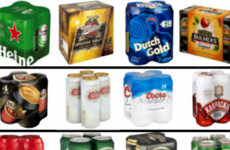What’s the first thing you did this morning?
Maybe you made a cup of coffee. Maybe you slumped down at the kitchen table munching a spoonful of cornflakes, grumpily contemplating the cereal box.
When did you first check your phone, log on to your email, peek at your Facebook page, or intercept the day’s first tweet ?
Digital media has infiltrated our lives, and most of us wouldn’t have it any other way. Today it’s a common morning routine to power up the laptop or check emails on your smartphone while slipping bread into the toaster. Memories of checking emails in the office or – god save us – a time before broadband existed have come to seem almost quaint.
But as useful as it is to be in touch with everything and everyone, when does it become too much?
The answer is frequently.
Anyone whose computer routinely has some, or all – or more besides – of the following displayed in front of them on a daily basis will sympathise with digital burnout: Word document, (personal) email, (work) email, (other) email, Twitter, Facebook, news site, other news site, blog, other blog, some interesting-looking website you just found, Google doc, Calendar, YouTube… and that’s all a work-related document is even opened.
How can anyone be expected to concentrate with so many things vying for attention? And it’s not just when you’re online either, Greg Head (video below) says that texting while driving has the equivalent level of impairment as drinking four beers.
So the question is how do you bypass the distractions while still staying clued in, particularly if you need to keep up to date with what’s going on? That was precisely the problem of one blogger, Ben Brooks.
But Brooks came up with a very simple and very effective way of dealing with the issue. He wiped all of his distracting social networking and email accounts off his computer and moved them to his iPad; meaning he could work uninterrupted but could check in on the world during his breaks.
Of course, you don’t need to have an iPad to do the same thing, if you have a tablet computer, secondary laptop or netbook they could be similarly used.
So, now it’s just you and a blank screen.
Since that might be a little scary, the next important question is when can you take a break?
Well, watch the video below to learn about the Pomodoro Technique. It’s simple, requires minimal organisation and – most importantly – it trains your brain to engage in deep thinking.
For all the benefits that multi-tasking brings, deep thinking is a crucial skill that has become somewhat lost in our high-speed digital world, which is probably one of the only valid criticisms that can be levelled at the information age.









COMMENTS